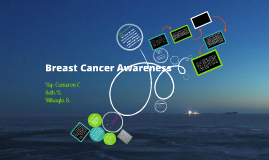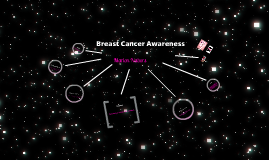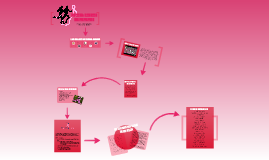Breast Cancer Awareness
Transcript: The Susan G. Komen sixty mile, three day walk raises awareness and funds for breast cancer. This walk was organized in 2002 as a two day, thirty-nine mile walk and has grown over the last nine years. The walk raises a minimum of $2,300 towards the fight against breast cancer. Since it started, the walk has raised over 400 million dollars towards the cure. 1 in 8 women in the United States (12%) will develop invasive breast cancer over the course of her lifetime. Besides skin cancer, breast cancer is the most commonly diagnosed cancer among U.S. women. More than 1 in 4 cancers in women (about 28%) are breast cancer. About 5-10% of breast cancers can be linked to gene mutations inherited from one’s mother or father. A woman’s risk of breast cancer approximately doubles if she has a first-degree relative (mother, sister, daughter) who has been diagnosed with breast cancer. About 20-30% of women diagnosed with breast cancer have a family history of breast cancer. The most significant risk factors for breast cancer are gender (being a woman) and age (growing older). Seymour Pink was founded by Mrs. Deming as a way to "See More" Pink and spread awareness about Breast Cancer. It is "a community's fight against breast cancer". Fall 2011 Events: 10-18: SHS Girl's swim team first annual Pink Swim Meet 10-19: Third annual Seymour Pink Day Celebratoin at Lanza's Restaurant and Pizzeria Oxford Academy is offering free haircuts with a $10 donation 10-20: Downtown Seymour Night out for the Cause 10-21: Candy Coburn Concert 10-22: Zumbathon at Peak Fitness 11-4: Winetasting at Villa Bianca Miss Kazo is an art teacher in the elementary level who shared her personal story in her battles with Breast Cancer with us. She explained that her first time diagnosis was at Stage 1 in which she got a lumpectomy, and recieved chemo treatments. She described the whole process as "surreal". After taking medicine in remission for 5 years, cancer was located again in a different breast, and this is where her struggles continued. She underwent many surgeries, including a full masectomy, where they had to fuse her skin cells together keeping them alive. When asked who and what supported her in her fight against Breast Cancer, she said that her family and friends helped her the most. She also talked about the relationships with her doctors and nurses, who were part of her support system, and her weekly routine. "I could not believe how much people actually cared for me", she said. When asked about the financial situations involved in her fight with Breast Cancer she said she didn't understand how people got through the struggle without a good handle on their insurance. She said that she had to be very aware of every co-pay, and every doctor's bill involved, and without her knowledge of her insurance system she believed she wouldn't have recieved the proper treatment. "Stand your grounds, and get what you need". Miss Kazo emphasized on the mental and emotional change that comes about when a person has cancer. She said that it was no longer just a disease, but it "became a way of life". She compared herself to the character Sally in The Nightmare Before Christmas, saying that she has thousands of stitches holding her together. To her, Breast Cancer will always be "the shadow over her shoulder", but her admirable strength in her fight is something to be cherished and celebrated. The History Of Breast Cancer 2011 1600 B.C. Breast cancer Statistics An interview with Miss Kazo. By: Francesca DelPrete, Emily Dieckman, Kelly Ferris, and Caitlin Slotter In loving memory of The 17th Century Benjamin Bell and Jean Louis Petit became the first surgeons to treat breast cancer by removing the underlying chest muscle, breast tissue and lymph nodes. The start of the Susan G. Komen foundation. Made in honor of Komen who was diagnosed with breast cancer at 33 years old. The foundation still thrives, raising money for the cure. Donate Participate in a run / walk Become an advocate Participate in events (golfing, bowling, concerts, etc.) Attend a conference Buy ribbons Wear PINK ! How to get Involved The egyptians are said to be the first to discover breast cancer. In this time there was no set cure for the disease, and it was treated by cauterization. In the present day, we are more aware of breast cancer. Women and men alike get their breasts examined, and people are more aware of the causes, symptoms and dangers of breast cancer. Treatments range from breast augmentation to chemo-therapy. People are more strongly than ever fighting for a cure. 1882 - 1970 Breast Cancer Awareness Cindy Morosko Theodosia K. McEnerney Erin Coughlin Lorraine Petrocelli Susan Judd Laura Rogers Howard B. King Elizabeth F. Dinan Angelina Lydiksen Louis and Jane Mascolo John Holmes Renee Greer Jean Gucciardo Grandma Tucker Lucille Robillard Marie Wrinn Wanda Neville Amelia Kozlowski Marie Dechane Mary Jane Bowersox America 1982 (cc) image by jantik on Flickr In this period, radical

















